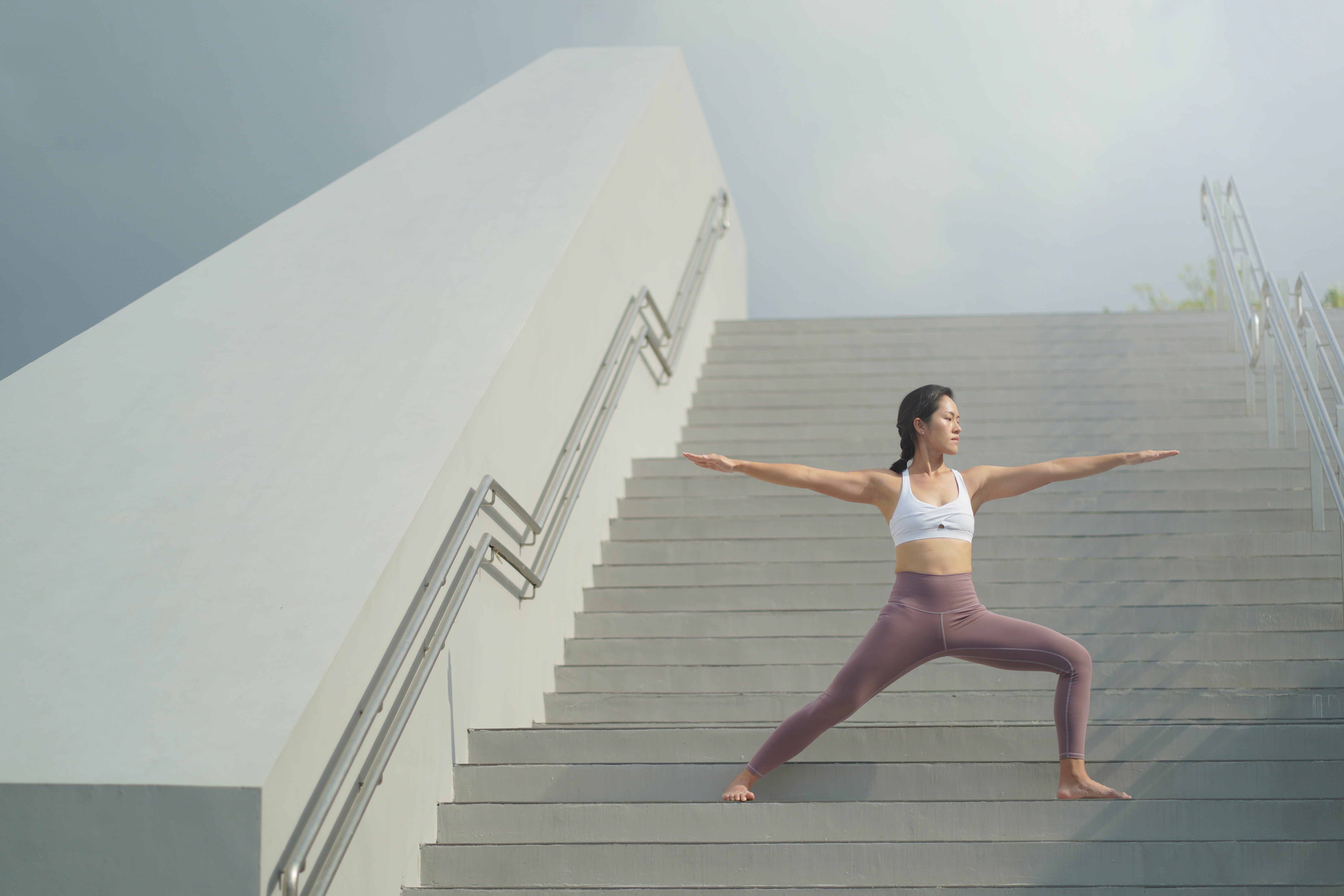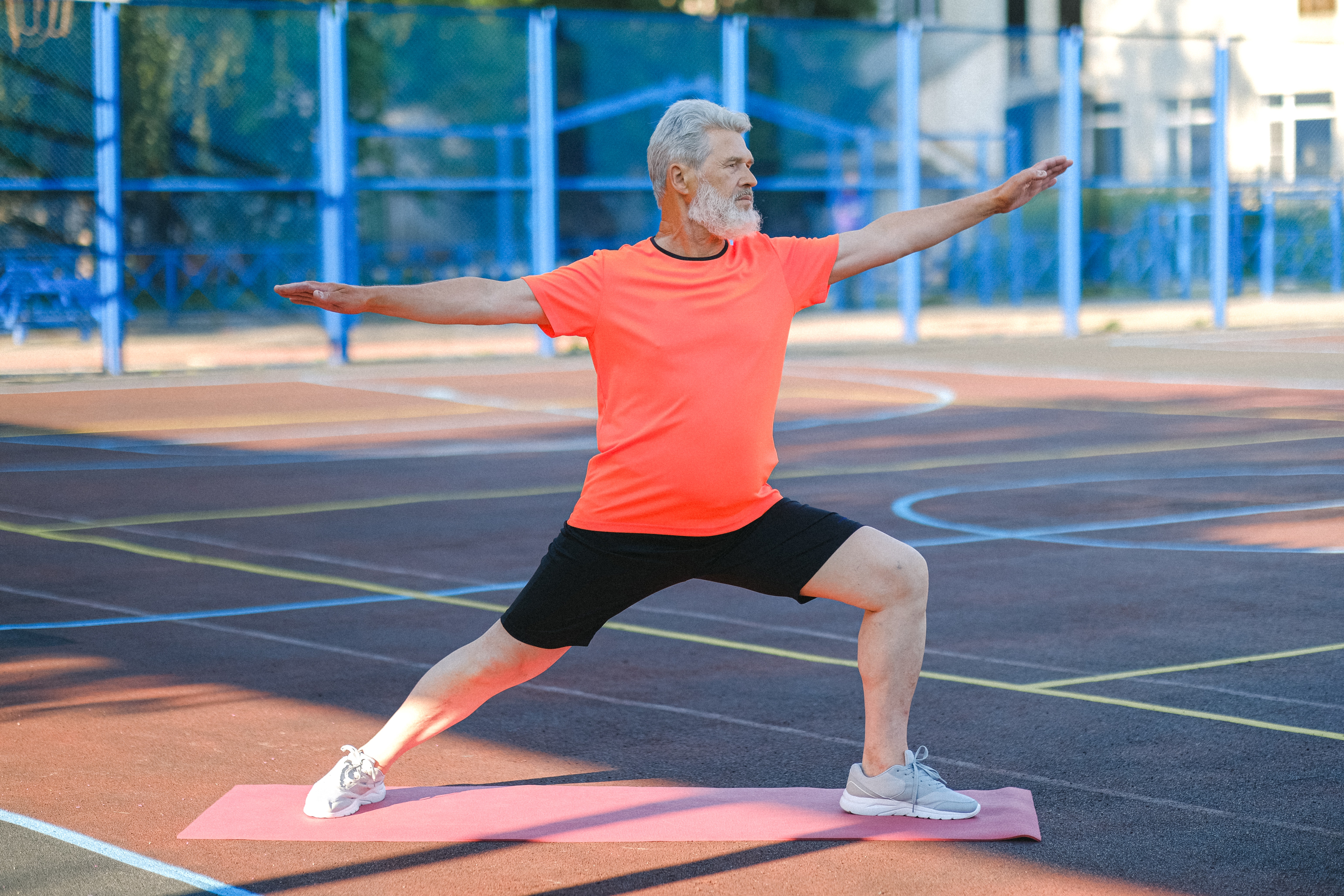Pose: Warrior II
- Asana:
- Virabhadrasana II
- English Name:
- Warrior II
- Type:
- standing
- First Used:
- 15th century
Description
The poses can be entered from a standing position, Tadasana, jumping or stepping the feet wide apart.
For Virabhadrasana II, starting from Tadasana, the feet are spread wide, the front foot is turned fully out, and the back foot is turned in very slightly. The body remains facing forwards, so the hips remain in line with the feet, the body sinks down into a lunge until the front knee is bent at a right angle, and the arms are extended fully with the palms down, at shoulder level. The gaze is directed straight forward over the front hand.
Virabhadrasana has been called "easily one of the most iconic and recognizable postures" in yoga as exercise.
Etymology and origins
The name is from the Sanskrit वीरभद्र Vīrabhadra, a mythical warrior, and आसन āsana, a yoga posture or meditation seat. Ancient cave rock sculptures in the Ellora Caves, specifically cave 16 and cave 29, show a warrior-Shiva figure in a pose somewhat resembling Virabhadrāsana while conquering demons or wooing his consort Parvati. Still, these poses are not attested in the hatha yoga tradition until the 20th century with the practices of Tirumalai Krishnamacharya and his student Pattabhi Jois, who was photographed in Warrior I in about 1939.
Poses close to Virabhadrasana were described independently of yoga in a European source early in the 20th century, namely in Niels Bukh's 1924 Danish text Grundgymnastik eller primitiv gymnastik (known in English as Primary Gymnastics). Bukh's poses were derived from a 19th century Scandinavian tradition of gymnastics dating back to Pehr Ling, and "found their way to India" by the early 20th century. Mark Singleton suggests that these standing poses were most likely influenced by the tradition of physical culture including Bukh-style gymnastics of the early 20th century.
Examples


